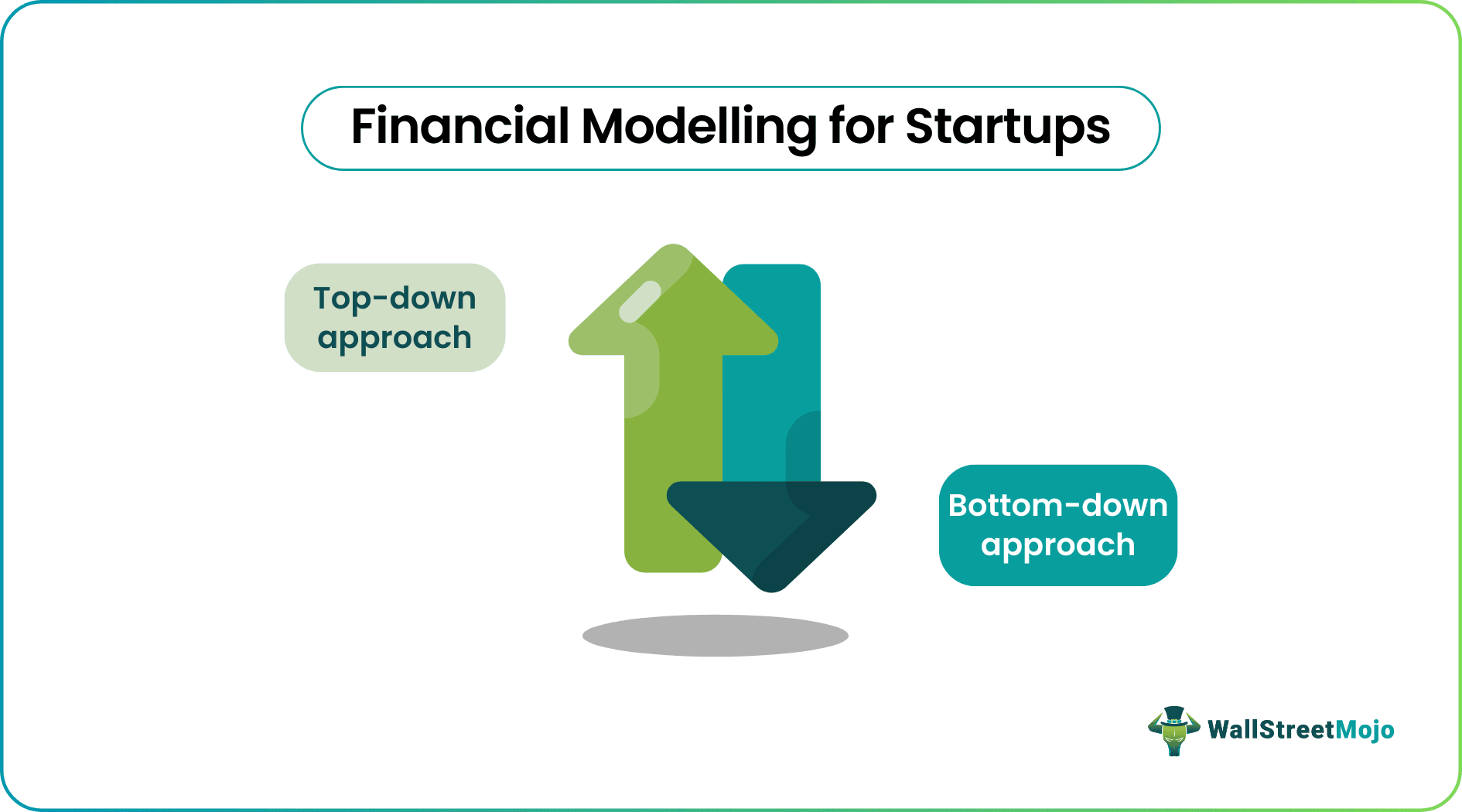Table Of Contents
What is Financial Modeling for Startups?
Financial modeling for startups is the process of projecting and forecasting revenue, customers, employees, costs, etc., for the future to understand and assess the profitability and viability of the business. Given that the startup is still in shape, this modeling will help prepare the budget and business plan for them and will help present that to potential investors.

Two Approaches to Startup Financial Modeling
#1 - Top-Down Approach
In the top-down approach, the entrepreneur starts with macro factors and then works through the micro factors. Starting points are the industry standards, which narrow down to targets the companies can fit in. This approach helps define the forecast based on the market share you want to acquire.
TAM (Total Available Market), SAM (Serviceable Available Market), and SOM (Serviceable Obtainable Market) models help in this kind of approach. In this model, at first, TAM for the product is estimated. Then we have to decide the part of the market we want to acquire, known as SAM. From that SAM, the existing service base of the company is known as SOM based on the existing competition. So in this model, we start with industry size to the market share we can capture.
#2 - Bottom Down Approach
The main problem with a top-down approach is that it can be too optimistic. Usually, we take SOM as a percentage of the total market, which is very hard to achieve. In the bottom-down approach, the entrepreneur takes a tiny portion of the market for his sales and then assesses the sales from his company's inside point of view to estimate the forecasts and modeling procedures.
Steps to Create a Startup Financial Model
Here we use the top-down approach to create the financial model in excel
- Revenue: The first thing is to determine and forecast the revenue for the product you are launching. It can be a bit tricky because you are a new entrant into the market. For determining the sales, you can use the Total Available Market (TAM), Serviceable Available Market (SAM), and Serviceable Available Market (SOM) model. First, the total available market is to be determined and from that company’s estimated revenue needs to be found.
- Costs: This can be easier since the firm controls its resource and overhead costs. Costs will include direct costs, overhead costs etc.
- Income - To achieve and calculate Operating Income and Net Income, we use the above two parameters. You can calculate Operating income by subtracting operating costs from revenue.
- Growth Rate - The future growth rate for revenue and costs also needs to be determined, which can be quite tricky, given the uncertainties over the future. For projecting future revenue, the industry outlook, the company's available cash, and future investment need to be seen. Cost projection can be a function of revenue.
Below is the excel format for the Startup financial model:


Assumptions Used in the Model
- Base Revenue or market share is one of the main assumptions for startups. Usually, entrepreneurs try to drive it through the industry standard and their positioning.
- The growth rate is one of the main assumptions driving the financial model. While taking the revenue and cost growth rate, the entrepreneur needs to understand the macroeconomic factors such as industry or country health, and then look through their startup's cash position.
- Future investment: For growth, startups need continuous investment from external sources, and they will also have to make that assumption while creating the financial model.
Why should an Entrepreneur Focus on Financial Model?
While creating the financial model, the entrepreneur can understand some aspects of the business that he otherwise won't be able to understand. Though there are many templates for financial modeling present online, entrepreneurs should always create the model, keeping in mind the nature and assumptions of their business.
Also, by working through each row and column of the financial model, the entrepreneur can understand what the missing aspects of the business are; or what elements are unnecessary and remove those from the financial model. It also boosts their confidence while presenting to the investors.
Why Build Financial Model for Startups?
- It helps in understanding the revenue and cash flow forecast for the business.
- It helps in understanding the company's assumptions while creating the business.
- Investors carefully look through the financial model before investing in the business
- It helps in understanding the viability and profitability of the business.
- It helps in presenting the real picture of the business to the external investor and debating the investment terms.
- It helps in quantifying the assumptions for the startups.

